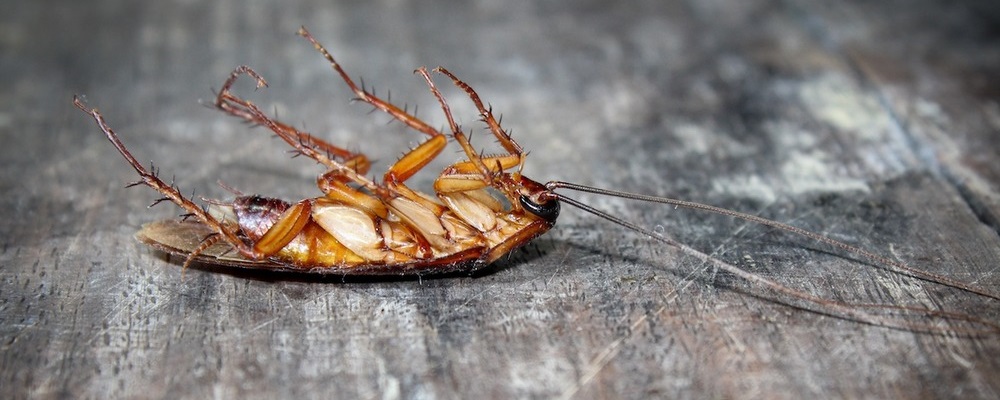
Some pests only cause annoyance, while others can lead to significant damage to building structures and crops. According to the Census Government, 14 million out of the 124 million houses in the US have pests in their home. That’s why it’s essential to understand the difference between these two types of pests to ensure you’re protecting your home.
This article will discuss nuisance pests vs. destructive pests and how to manage them and when to call in a professional pest control company to avoid any issues. So, let’s dive into the details!
What are Nuisance Pests?
Nuisance pests refer to insects, rodents, or other animals that only cause annoyance or inconvenience. However, these pests may cause physical damage to structures, transmit diseases, contaminate food, or simply be a nuisance.
Nuisance Pests Types
Let’s discuss the most common types of nuisance pests to know more about them:
1. Ants
Ants are one of the most common types of nuisance pests found in homes and commercial buildings. They are attracted to sweet and sugary substances, and they can easily find their way into homes through tiny cracks and openings. Ants contaminate food and cause structural damage to buildings if their nests aren’t located and eliminated.
2. Cockroaches
Cockroaches are nuisance pests that can infest homes and buildings. They can spread diseases and trigger allergies, and their presence can be unsettling for many people. Additionally, they hide in cracks and crevices and can be challenging to eliminate without professional pest control.
3. Flies
Flies are known for their annoying buzzing sounds and their tendency to land on food and surfaces. They can spread diseases and contaminate food, and their presence can be a major source of frustration for homeowners and business owners alike.
4. Mosquitoes
Mosquitoes are a common nuisance pest that can make outdoor activities unpleasant. However, they also cause severe diseases, resulting in serious health issues and sometimes death. This makes them a destructive pest along with being a nuisance pest. They transmit diseases such as West Nile virus and Zika virus, and their itchy bites can be irritating and uncomfortable. Professional mosquito control measures such as eliminating standing water and using insect repellent can help reduce their presence.
5. Spiders
While spiders are generally considered beneficial because they prey on other insects, their presence can annoy many people. Moreover, some species of spiders are venomous, and their bites can cause allergic reactions in individuals. Proper nuisance pest control measures can help reduce their presence in homes and buildings.
6. Rodents
Rodents, such as mice, squirrels, etc., are considered nuisance pests because they interfere with your normal daily activities. However, they are also destructive in nature and cause property damage, contaminate food, and spread diseases. They can also cause damage to structures by gnawing on wood and wiring. So, it’s essential to control them as soon as possible to prevent any health issues and furniture damage.
What are Destructive Pests?
Destructive pests are organisms that cause significant damage to crops, animals, or human structures. These pests are of different types, including insects, fungi, bacteria, and animals. They cause damage to the ecosystem, the economy, and human health, resulting in huge losses.
Types of Destructive Pests
Understanding the different types of destructive pests is essential for effective pest management, so let’s discuss them!
1. Carpet Beetles
Carpet beetles are another type of destructive pest, and they are ⅙ to ⅛ inches long. They have oval-shaped bodies with multiple tiny hairs that give them a fuzzy appearance. Carpet beetles feed on fibers such as silk, cotton, wool, etc., and other organic materials. Typically, the female carpet beetles lay eggs on the material they feed, and the larvae hatch onto that material and feed. This causes significant damage to your clothes, home’s carpet, curtains, and other things.
2. Wasps (Yellow Jackets, Paper Wasp, etc.)
Wasps such as Yellow Jackets, Paper Wasps, and others also belong to the destructive pest category. Generally, wasps have long and slender bodies and have the ability to sting, which can be painful. They cause severe damage to plants by feeding on sap, resulting in the destruction of your beautiful garden. Moreover, they also attack fruits and crops, causing severe damage and reducing overall yield.
3. Pantry Pests
Pantry Pests have a golden brown color, and they are usually found in your home’s kitchen or food storage areas. These destructive pests feed on dried and processed food products, damaging the food and contaminating it with their feces and webbing. Additionally, some species of Pantry Pests also destroy the packaging of stored food, making them vulnerable to moisture.
4. Termites
Termites are wood-destroying insects that cause significant damage to homes, buildings, and other wooden structures. They feed on cellulose-based materials like wood, paper, and cardboard and can cause severe structural damage if left unchecked.
Termites can go undetected for years, and by the time their presence is noticed, the damage may already be extensive. Termites live in large colonies and are divided into castes, each having a specific role.
5. Ticks
Ticks are blood-sucking parasites that transmit various diseases to humans and animals. They are commonly found in wooded areas, grasslands, and on animals and are known for their ability to attach themselves to their hosts and feed for extended periods. They typically feed on small mammals like mice and deer, but they can also feed on humans and domestic animals.
Ticks can transmit Lyme disease, Rocky Mountain spotted fever, and ehrlichiosis, among others. Moreover, they are difficult to detect due to their small size and can hide in hard-to-see areas like the scalp, groin, and armpits.
6. Rats
Rats belong to the rodent group and are destructive pests that can cause significant damage to buildings, homes, and infrastructure. These pests can also cause damage to electrical wiring and insulation, leading to fires – and contaminating water sources – making them unsafe for human consumption. They can also dig extensive burrows and tunnel systems, causing damage to foundations, sidewalks, and roads.
Conclusion
In nuisance vs. destructive pests, the latter causes more significant damage to properties, the economy, and human beings. The common nuisance pest types include bed bugs, mosquitoes, spiders, etc. At the same time, the destructive pests are termites, fungi, rats, etc.
Getting rid of these pests is hard, but Gregory Pest Control can do it hassle-free. Our experienced team will carefully analyze your home and adopts proper pest and mosquito control measures to ensure no pests invade your home. So, please don’t wait and contact us today to make your home free from damaging pests!

Paul Gregory
Owner/President of Gregory’s Pest Control
I’m a 2nd generation pest control owner who started working for my father in 1999. I was raised in South Florida and feel blessed to call it home for my entire adult life. As a long-term Florida resident, I recognize the challenges of controlling the many different pests that thrive in our subtropical climate. In particular, I understand how difficult it can be to prevent pests from invading our homes and businesses. By helping families solve their pest problems so they can live safer, more comfortable lives, I feel I am also meeting my family’s commitment to help our community. When I’m not out fighting pests, you can find me on the golf course or out on a soccer field where I have been fortunate enough to coach soccer to kids of all ages for the past 20 years.




